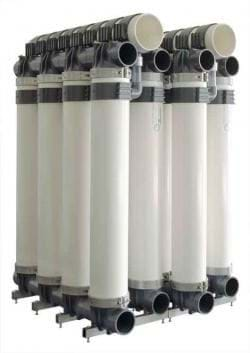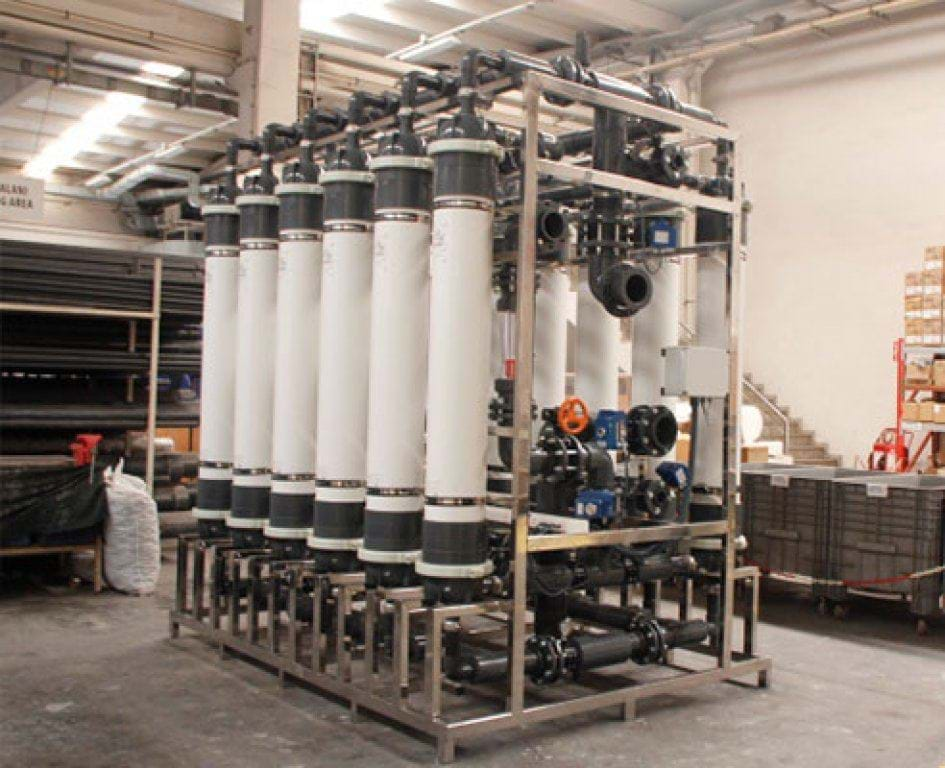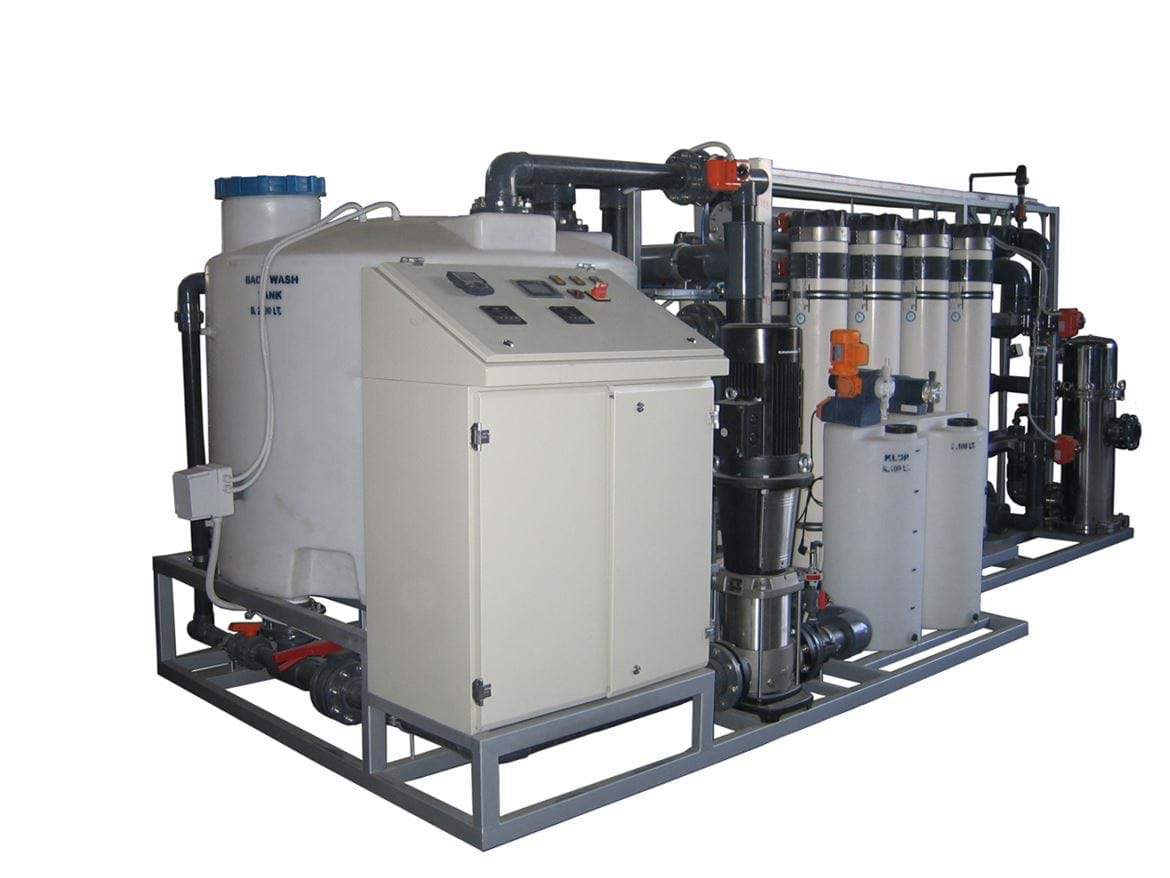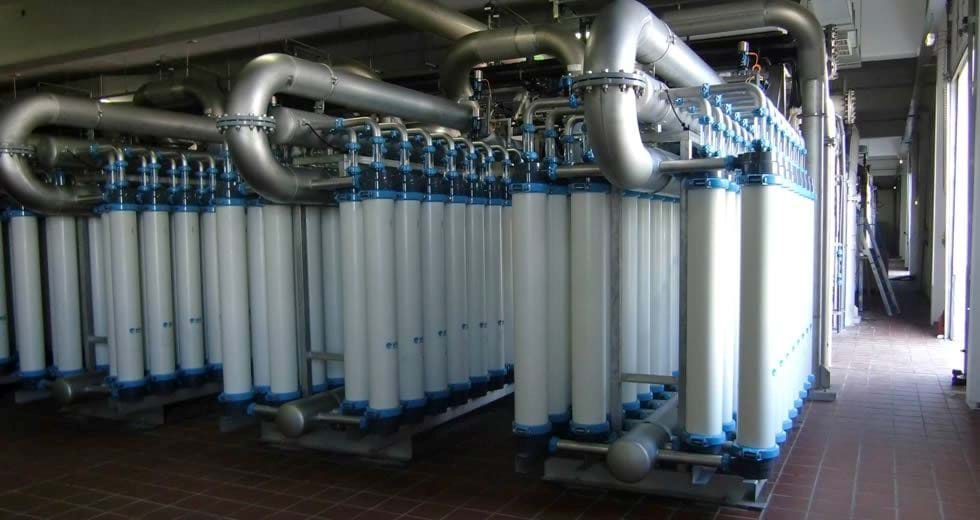An ultrafiltration filter has a pore size around 0.01 micron. A microfiltration filter has a pore size around 0.1 micron, so when water undergoes microfiltration, many microorganisms are removed, but viruses remain in the water. Ultrafiltration would remove these larger particles, and may remove some viruses. Neither microfiltration nor ultrafiltration can remove dissolved substances unless they are first adsorbed (with activated carbon) or coagulated (with alum or iron salts).
A nanofiltration filter has a pore size around 0.001 micron. Nanofiltration removes most organic molecules, nearly all viruses, most of the natural organic matter and a range of salts. Nanofiltration removes divalent ions, which make water hard, so nanofiltration is often used to soften hard water.
Ultrafiltration and Nanofiltration system design is based on raw water characteristics and quantity. Please contact us for further information.







